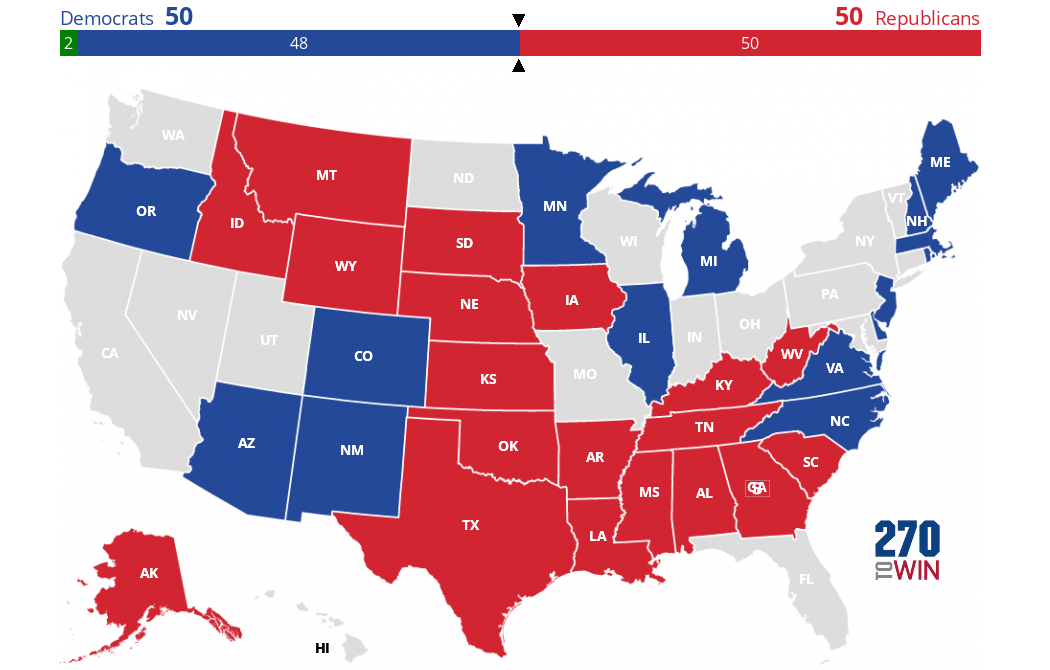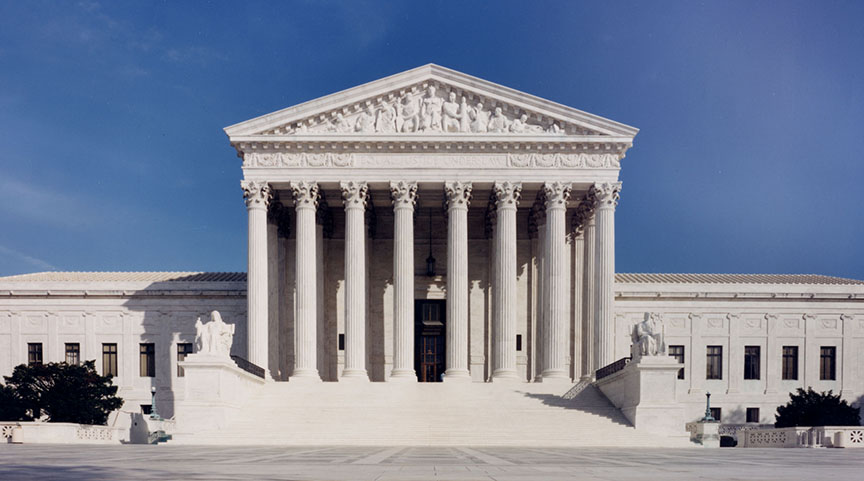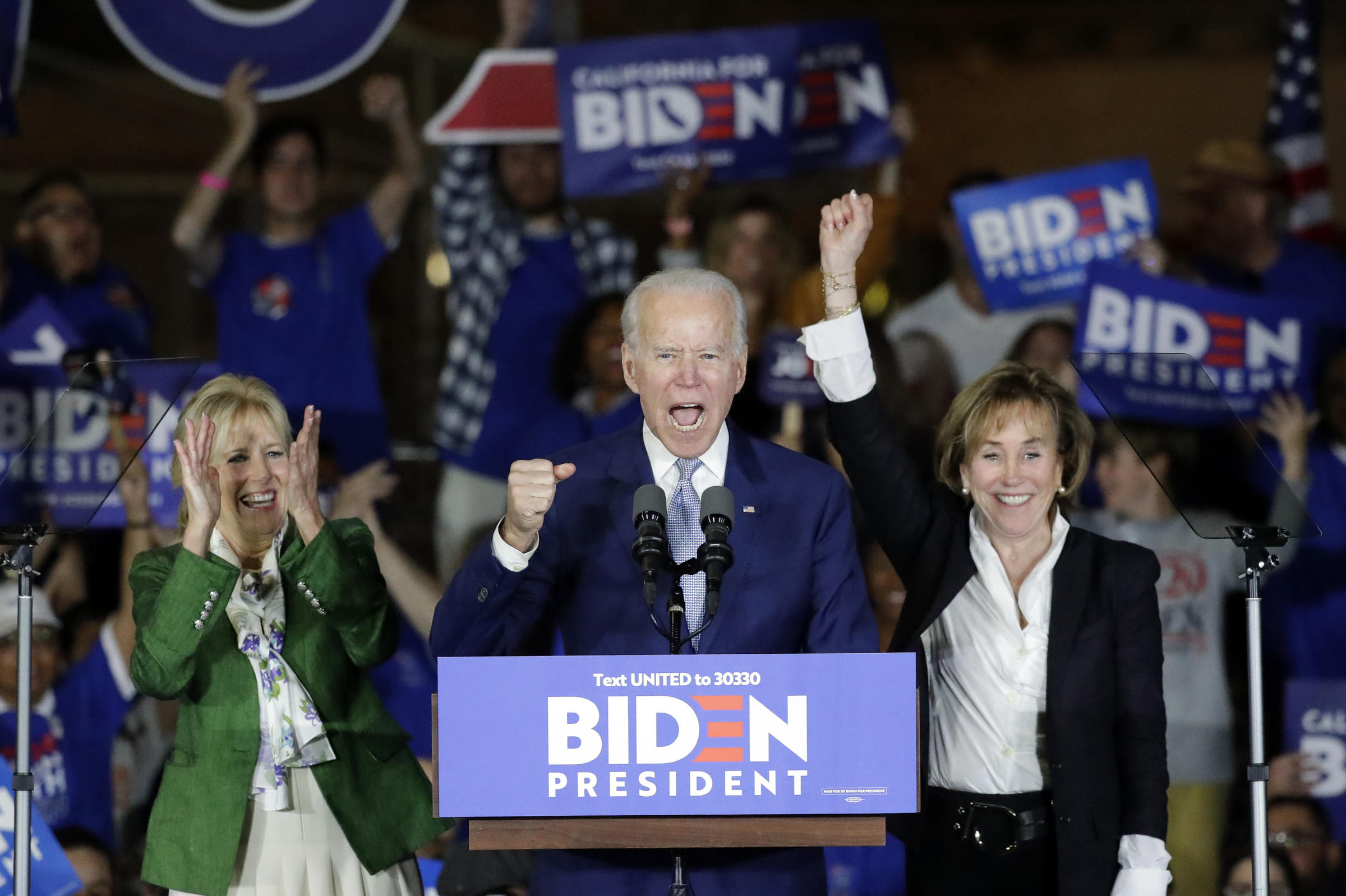
On Monday, Ohio Senator Rob Portman made the surprise announcement that he will not be running for a third Senate term in 2022. The Republican – at one point considered a possible running mate for Mitt Romney in 2012 – blamed his decision to retire on “partisan gridlock” in Washington preventing legislation from being passed.
Portman is one of the more moderate GOP Senators, and has gained a reputation in Washington for his bipartisan credentials, and has enjoyed a positive relationship with his fellow Ohio Senator, Democrat Sherrod Brown.
The 2022 midterms will be a key test for the Democrats, who currently have control of both the Senate and House of Representatives, but with the slimmest of majorities. The Republicans need to gain just one seat in the Senate – currently tied at 50-50 – and just five seats in the House to wrest control from the Democrats. Because of this, and with Portman’s retirement, Ohio’s Senate race will be far more crucial for both parties.
Ohio’s politics have been trending to the Republicans in recent years, and so this will likely give Portman’s successor an advantage in the race. But success or failure in an election can sometimes come down to the candidate. In this post, let’s consider some candidates from both parties who may look to succeed Portman in the Senate.
First up, for the Republicans:
Jim Jordan
The Representative for Ohio’s 4th District, Jim Jordan is a high-ranking member of the House Republican Party. He previously served as chair of the House Freedom Caucus, and as Ranking Member of the House Oversight Committee and House Judiciary Committee. Jordan was also a close ally of former President Donald Trump – having been awarded the Presidential Medal of Freedom by Trump at the end of his term – and so Jordan’s candidacy would give more strength to the pro-Trump wing of the Ohio Republican Party. There had been some talk of Jordan running for Ohio Governor in 2022, mounting a primary challenge to Mike DeWine; however, a vacant seat in the Senate would be an easier target. Jordan has not yet commented on whether or not he will run.
Bill Johnson
Johnson, the Representative for Ohio’s 6th District, has expressed interest in running for Senate. A former US Air Force veteran, Johnson occupies a district which covers a swathe of Appalachian Ohio running the length of the Ohio-West Virginia border. This area was once heavily Democratic, sending former Ohio governor Ted Strickland to Congress for several years. While not as vocal in his support for Trump as Jordan was, Johnson still voted with Trump 100% of the time during the 117th Congress from 2019-2021, and holds a fairly consistent set of conservative viewpoints. However, Johnson also represents a heavily blue-collar district, and so he could be a good candidate to appeal to different sections of the party.
Jim Renacci
The former Representative for Ohio’s 16th District could try and make another run for the Senate, having run unsuccessfully against Sherrod Brown in 2018, losing out by seven points. However, Renacci did not mount a particularly strong challenge to Brown in a state with a noticeable Republican trend, and so there may be other candidates in a better position to take up Portman’s vacant seat. Furthermore, Renacci has been critical of Republican Governor Mike DeWine, and – like Jim Jordan – has hinted that he could launch a primary challenge against DeWine for the Ohio Gubernatorial election, which will also be held in 2022.
Jon Husted
Ohio’s Lieutenant Governor has risen through the ranks of Ohio state politics; he was first elected to the Ohio House of Representatives in 2000, becoming House Speaker five years later. After a stint in the State Senate, Husted became Secretary of State, finally being elected Lieutenant Governor on Mike DeWine’s ticket in 2018. Husted, a family man and former University of Dayton football player, has expressed interest in even higher office than where he currently is, although he might not be keen to bail on DeWine ahead of his gubernatorial re-election campaign. His reputation as a fiscal conservative might help, but he has drawn the ire of the right wing of the party due to DeWine’s approach to the Coronavirus pandemic.
Frank LaRose
Ohio’s Secretary of State, who has been in the role since 2019, could also be destined for higher office. One of the more difficult jobs LaRose has had as Secretary of State has been overseeing Ohio’s voting system, and he has been critical of suggestions of electoral fraud connected to the 2020 Presidential Election. Long considered a rising star of the Ohio Republican Party, LaRose has been highly rated by conservative organisations such as the American Conservative Union. However, LaRose – along with Husted – may be seen as a candidate from the Ohio Republican establishment; the pro-Trump wing of the Republican Party has almost been at war with Governor DeWine over his Coronavirus pandemic strategy, and DeWine’s opponents will likely push to keep establishment candidates out.
So while a number of potential Republican candidates have been suggested, the Ohio Democratic party does not have the same plethora of names available to them these days. However, here are some of the more likely candidates whom the Democrats might turn to:
Tim Ryan
Tim Ryan has been the Representative in Northeast Ohio since 2003, representing the 13th District since 2013. Ryan’s district covers the cities of Youngstown and Warren, as well as eastern parts of Akron. The 47-year-old, who briefly ran for the Democratic nomination for President in 2020, seems like the obvious choice for the Democrats; Mahoning County, which flipped to Donald Trump in 2020, is partly in Ryan’s district, and if Ryan can win the Senate seat then it will show that Democrats can still win with voters who may have drifted towards Trump in a state which is moving away from the Democrats. Ryan has said he is “looking seriously at” the idea of running, and could be a safe and sane choice for the party.
Nan Whaley
The Mayor of Dayton first rose to national prominence following the 2019 shooting at Ned Pepper’s Bar in downtown Dayton, for which she led mourning and called for greater gun control. Whaley previously ran for the Democratic nomination for Governor in 2018, but withdrew and endorsed eventual nominee Richard Cordray. Whaley, who campaigned for Pete Buttigeig in 2019 and 2020, has said that she is mulling a run for Senate; she wouldn’t be the first Democratic mayor of a medium-sized city to enter the national political stage.
David Pepper
The outgoing chair of the Ohio Democratic Party has also been named as a possible candidate for Senate. However, he is one of the less likely candidates. Pepper served brief stints on Cincinnati City Council and the Hamilton County Board of Commissioners in the early 2000s, and also run unsuccessfully for a number of offices. He leaves the chair of the Ohio Democratic Party at a difficult time, with the party having been on the backslide in Ohio during his time in the chair.
While Ohio as a state has been trending towards the Republicans in recent years, that is not to say that they will have an easy year in 2022, with not only a Senate primary but potentially a gubernatorial primary to fight through. The elections in 2022 will show which faction of the Republican Party – the Trump-ist right or the more moderate establishment consensus-builders – will become the dominant force in Ohio in the post-Trump era. For the Democrats, at this point it is too early to say how they will fare in the 2022 midterm elections. However, the Democrats will have an uphill battle if they want to claim Ohio’s other seat in the Senate; while it is often the case that seats left vacant by the incumbent are more vulnerable in elections, the trend towards the Republicans in Ohio cannot be understated. Donald Trump won the state in 2020, beating Joe Biden by eight points and ending the state’s 56-year streak of voting for the President.
If the Democrats can choose a good candidate with a broad appeal, and if they are able to run an active and engaging campaign, then they have a chance to make the race competitive. However, at this point in time, I agree with Center for Politics’s Larry Sabato; Ohio’s 2022 Senate race is still Likely Republican.








